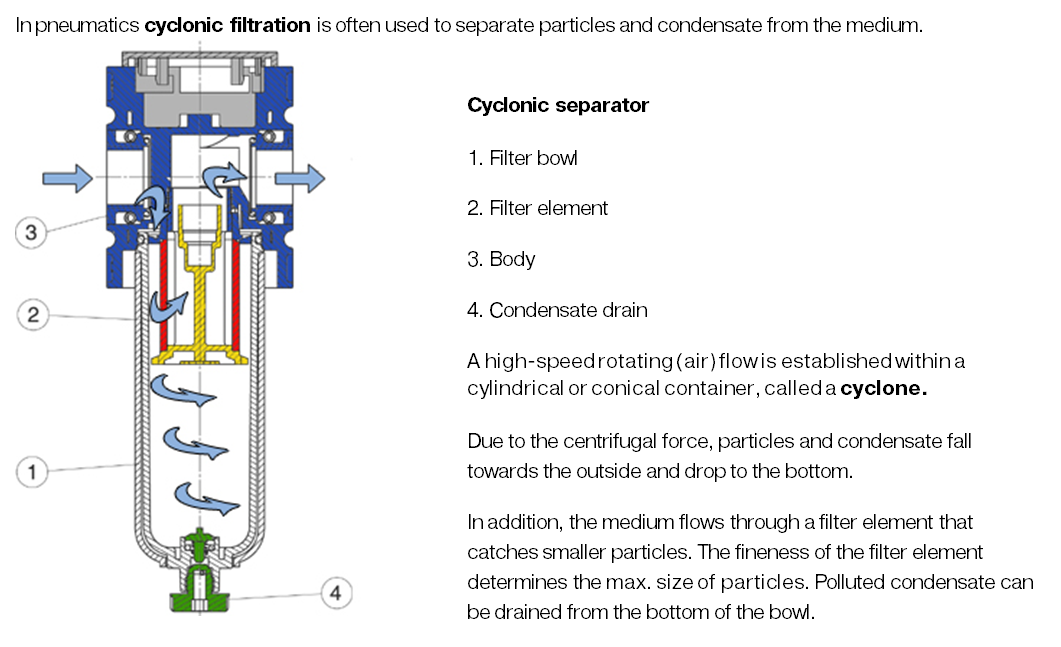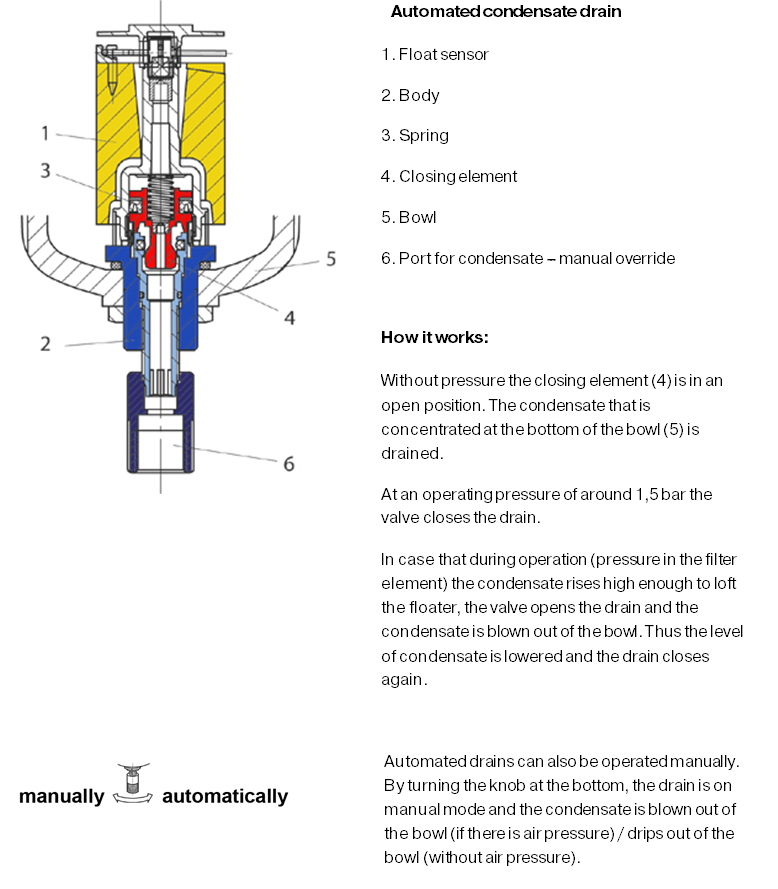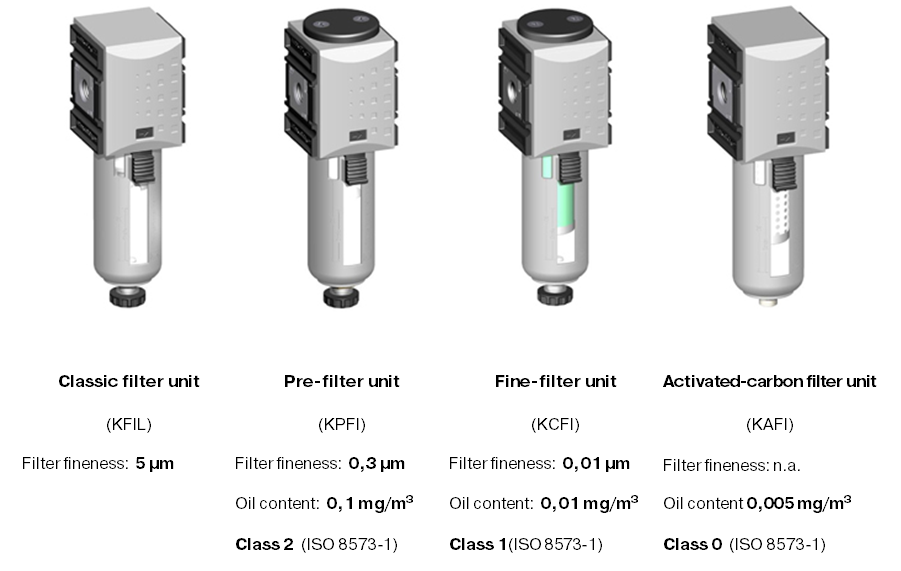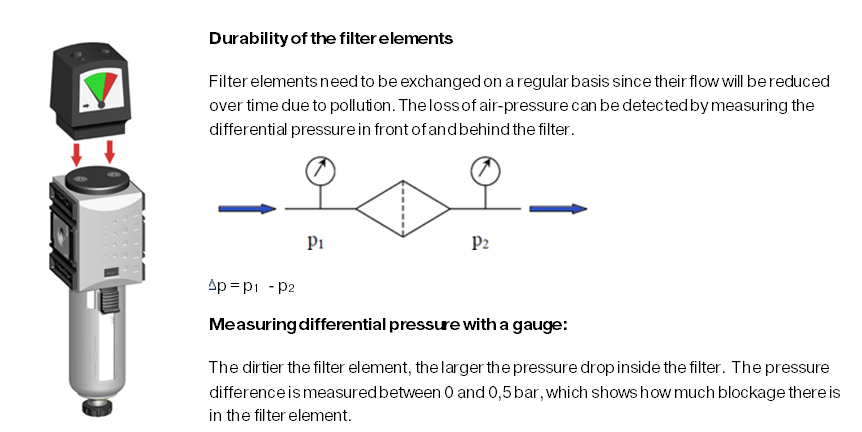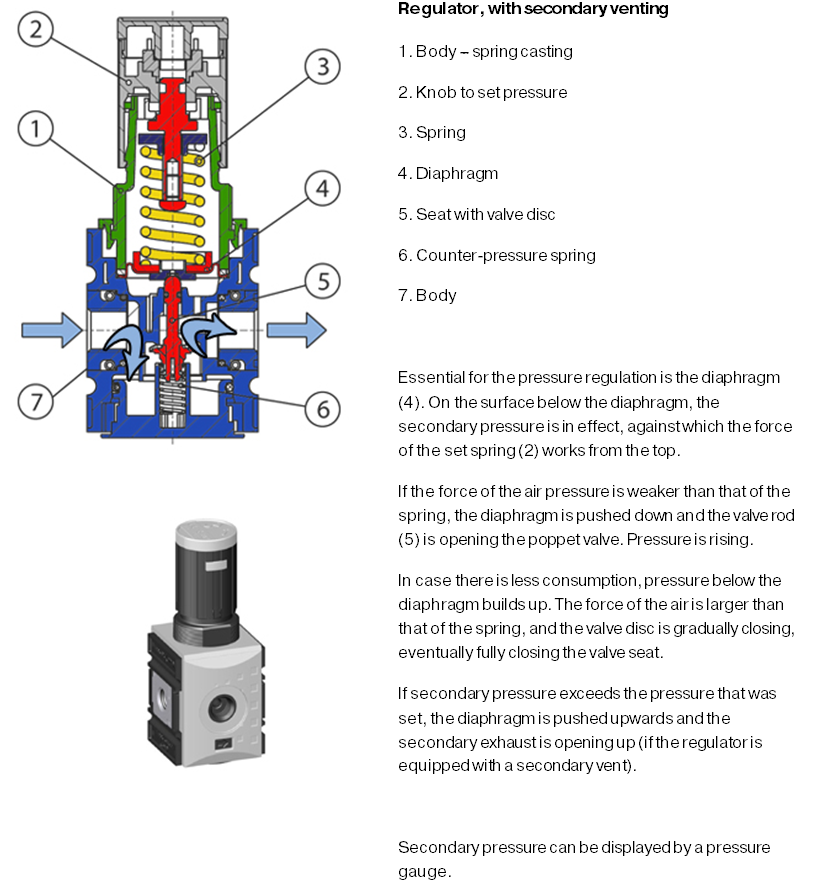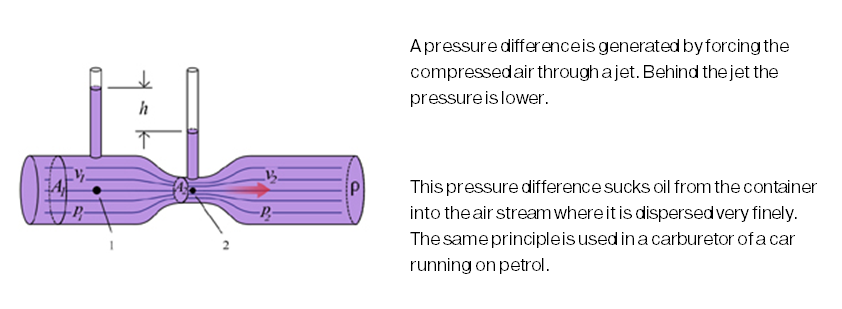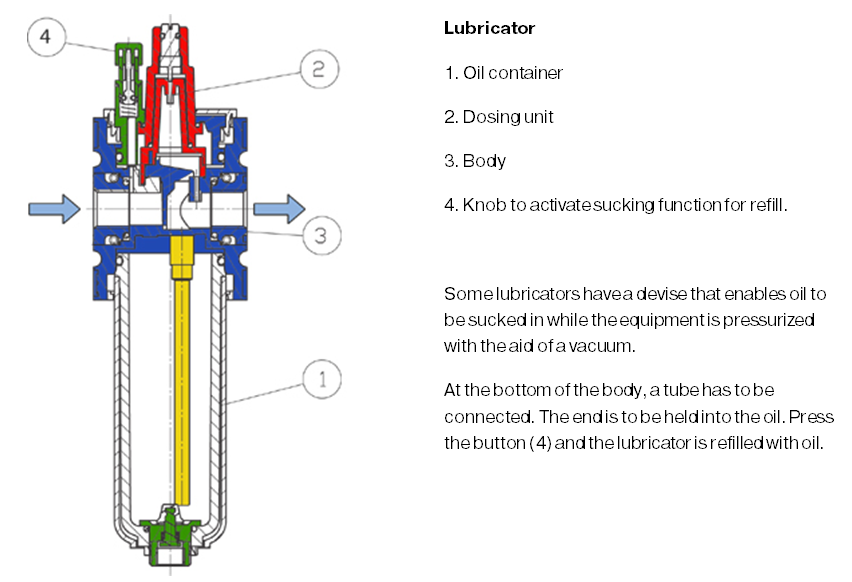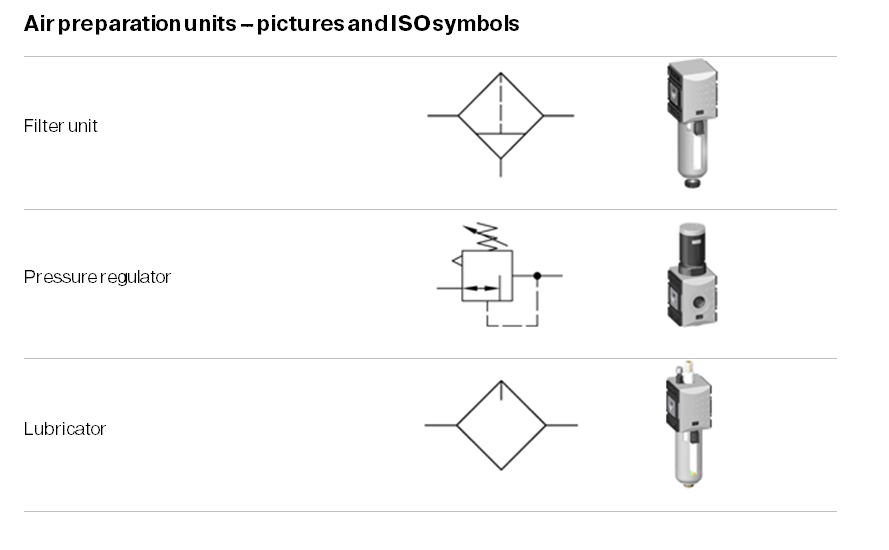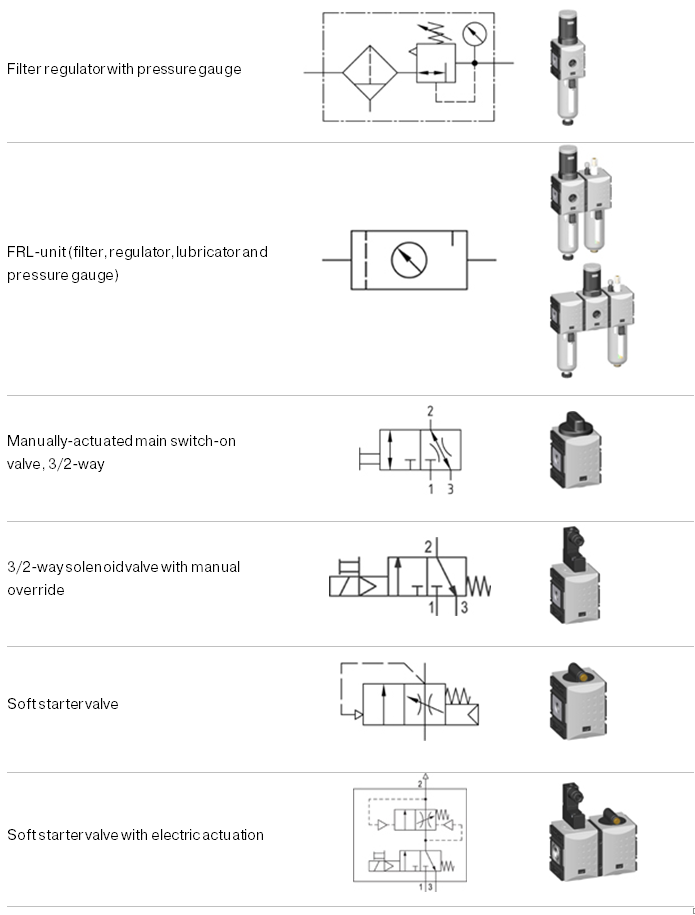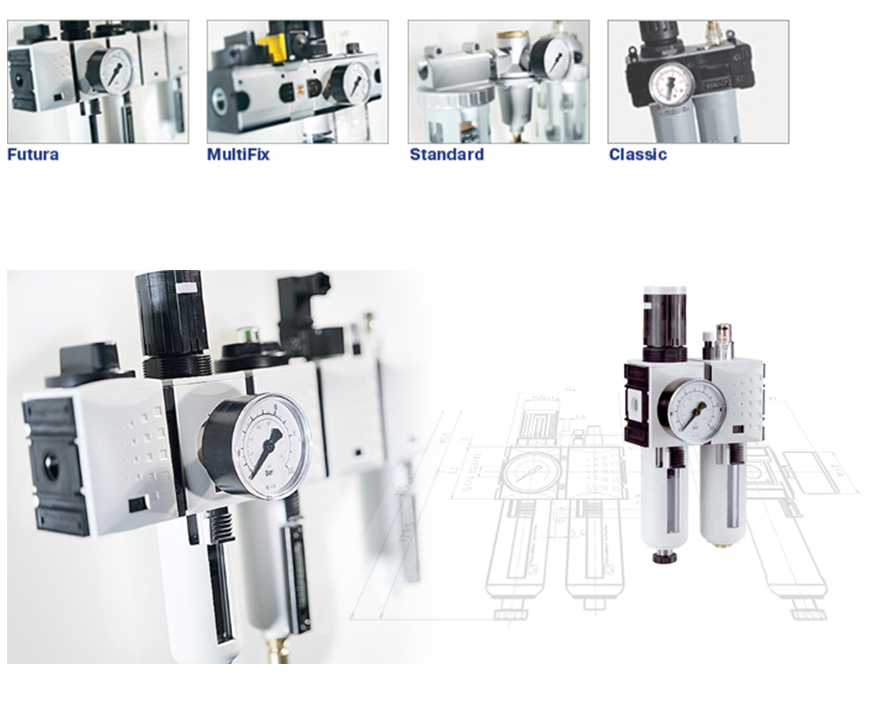Chapter 10 - Air Preparation Units
Filtering of compressed air
The task of the filter is to filter out particles and to remove the condensate released by the compressed air.
CAUTION! Filters (50 to 0,01 Micron) have no influence on humidity, they filter particles depending on the fineness of the filter elements. The water that is found in the condensate drain only consists of drops and is relatively irrelevant.
Sometimes several filters are necessary in a system because of different requirements:
- Pollution from the pipeline or condensate released during transportation has to be removed before reaching individual equipment.
- Different pieces of control or regulating equipment require different air quality.
- For specific applications (e.g. the packaging of food) standard filtration is insufficient. Activated-carbon filters are required. The air used in these filters has to be pre-filtered by fine-filters.
An automated drain valve works as a floating exhaust valve. As soon as the condensate reaches a certain level, the valve opens and drains the bowl.
Depending on the requirements inside the pneumatic system there are different filter elements offering different degrees of fineness and materials.
In pneumatics we typically use filter elements with a finesses of 5 to 50 µm.
In order to reach an air quality according to ISO 8573-1:2010 [7:4:4], the following is required:
- Concentration of particles: 5-10 mg/m3
- Filter fineness: 20-50 µm
In case of higher requirements, we recommend standard ISO 8573-1:2010 [6:4:4] which is still common in pneumatics:
- Concentration of particles: Maximum 5 mg/m3
- Filter fineness: 5 µm
Based on make and fineness of the filter element, we differentiate between filters:
- Classic filter unit
- Filter fineness: 5 µm, 20 µm, 50 µm
- Material: sintered PE, sintered bronze on request
- Pre-filter unit
- Filter fineness: 0,3 µm
- Material: cellulose-acetate
- Fine-filter unit
- Filter fineness: 0,01 µm
- Material: glass fibre with acetate
- Activated-carbon filter
- Material: activated-carbon
Pressure regulation with a regulator
Normally the network supplies pressure between 6 and 10 bar, which can vary depending on the rate of air consumption.
In order to use compressed air efficiently, the required pressure should be set for each piece of equipment with an individual pressure regulator. The individual pressure can only be lower than the pressure supplied by the network.
It is the task of the pressure regulating valve to hold the level of the output pressure on a constant level, regardless of input pressure or fluctuations in air consumption.
We differentiate between regulators with secondary venting and regulators without secondary venting.
Regulators with secondary venting can let out excess pressure on the secondary side, e.g. when the pressure P2 is reduced by the operator or when the pressure is increased by the equipment (high load on a large cylinder).
Regulators without secondary venting are usually used when the medium is not supposed to be released into the atmosphere.
CAUTION! Pressure regulation in pneumatics is a regulation of volume. The amount of compressed air behind the regulator needs to be large enough to build up an air pressure that is the same as set at the regulator (off-setting the force of the spring in the regulator). If the pressure drops, more air is fed into the system behind the regulator. There must be a balance between the force of the air-pressure and the force of the spring.
Lubricating the compressed air
Neither control-elements nor actuators are separately lubricated in a pneumatic system. In order to avoid wear-out, lubrication can help. Unnecessary friction also increases energy consumption.
The goal of the manufacturers of the components is to design products that do not require any individual lubrication. This can be realized by selecting the right materials, choosing the right seal system, reducing friction, or supplying the product with sufficient (life-long) lubrication when initially sold. For this kind of lubrication, special types of grease are available. They are designed to constantly stay in the valves or cylinders. In order for the lubricant to avoid washing-out, the air needs to be dry since water has a negative effect on it as well.
The same washing-out effect is true when lubricators are used. Therefore, if lubricators are in use, they must not run dry!
→ The eternal question: "Should lubricators be used or not?"
Answer: It always depends on the application!
In certain industries (e.g. food industry) lubrication is not allowed at all. In other industries with very big cylinders and strong forces, lubrication can be really beneficial, especially for the durability of the actuators.
The lubricators in pneumatic systems use the Venturi principle.
CAUTION! It is insufficient to have only one filter and one pressure regulator for the entire system. Due to the volatile consumption of compressed air, the different pieces of equipment need individual air preparation (pressure, sometimes also different air quality, filtration / lubrication).
We recommend to locally prepare the compressed air for the different pieces of your equipment. This reduces wear-out and increases the durability of machines and equipment.
There are many products to choose from:
Further information can be found in the category “FRL-units” on our website.

